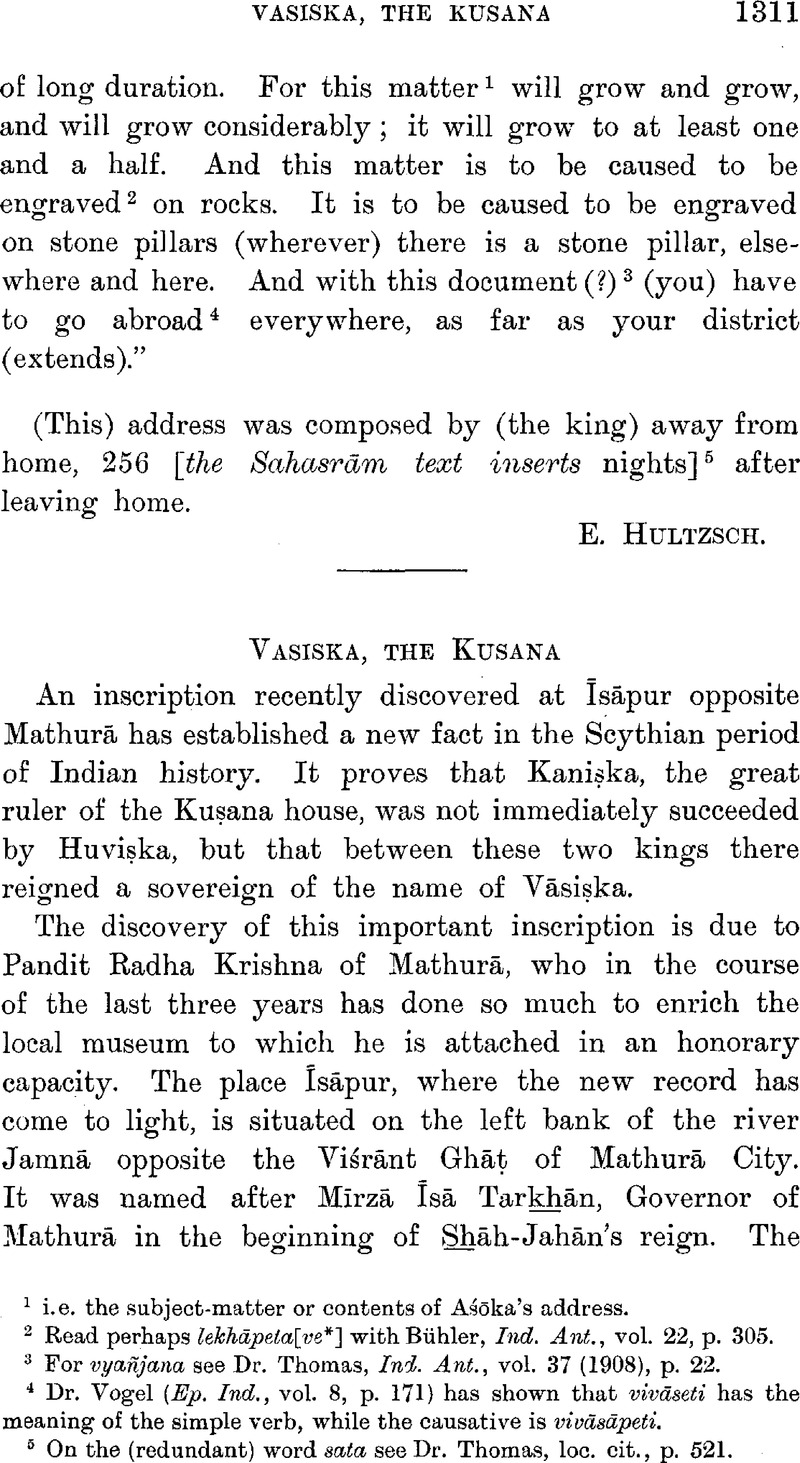
Page 1311 note 1 i.e. the subject-matter or contents of Aśōka's address.
Page 1311 note 2 Read perhaps lekhāpeta[ve*] with Bühler, , Ind. Ant., vol. 22, p. 305Google Scholar.
Page 1311 note 3 For vyañjana see DrThomas, , Ind. Ant., vol. 37 (1908), p. 22Google Scholar. DrVogel, (Ep. Ind., vol. 8, p. 171)Google Scholar has shown that vivāseti has the meaning of the simple verb, while the causative is vivāsāpeti.
Page 1311 note 5 On the (redundant) word sata see DrThomas, , loc. cit., p. 521Google Scholar.
Page 1312 note 1 Growse, F. S., Mathurā, a District Memoir, 3rd ed., Allahabad, 1883, pp. 6Google Scholar, 121, 175, 307.
Page 1313 note 1 The transcript is mainly the work of Pandit Daya Ram Sahni, Assistant Superintendent Archaeological Survey.
Page 1313 note 2 Possibly anṣ aksara is lost after mā.
Page 1313 note 3 Ep. Ind., vol. ix, p. 240Google Scholar. In this inscription we find a similar closing formula as in the present. Cf. also the Chargaon Nāga inscription of the year 40 in the reign of Huviṣka, noticed Progress Report Supt. Archceol. Survey, Northern Circle, 1907 –8, p. 38.
Page 1313 note 4 JRAS, 1909, p. 645 ff.
Page 1314 note 1 Ep. Ind., vol. ii, p. 369Google Scholar, plate; and JRAS, 1905, p. 357 f.
Page 1314 note 2 Ind. Ant., 1908, p. 58Google Scholar f., plate i.